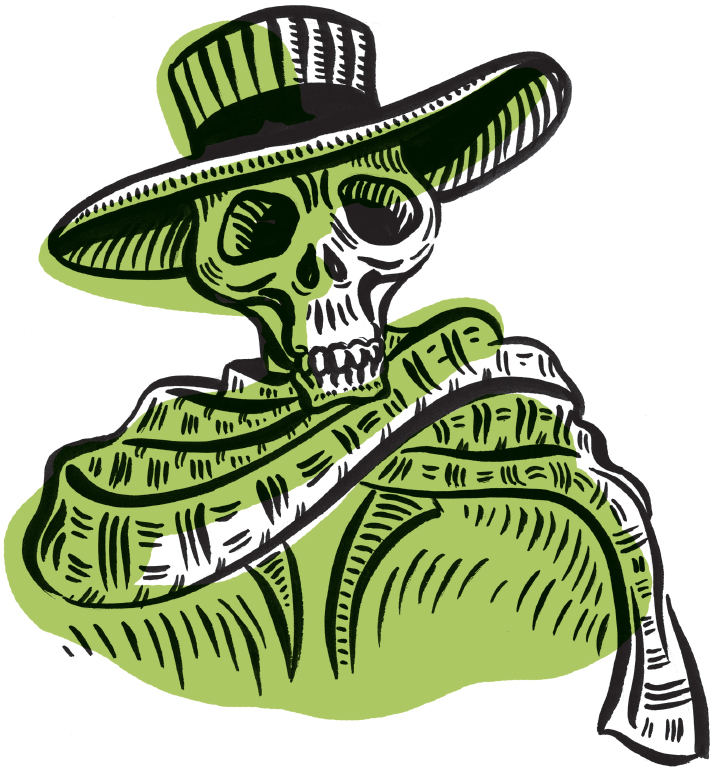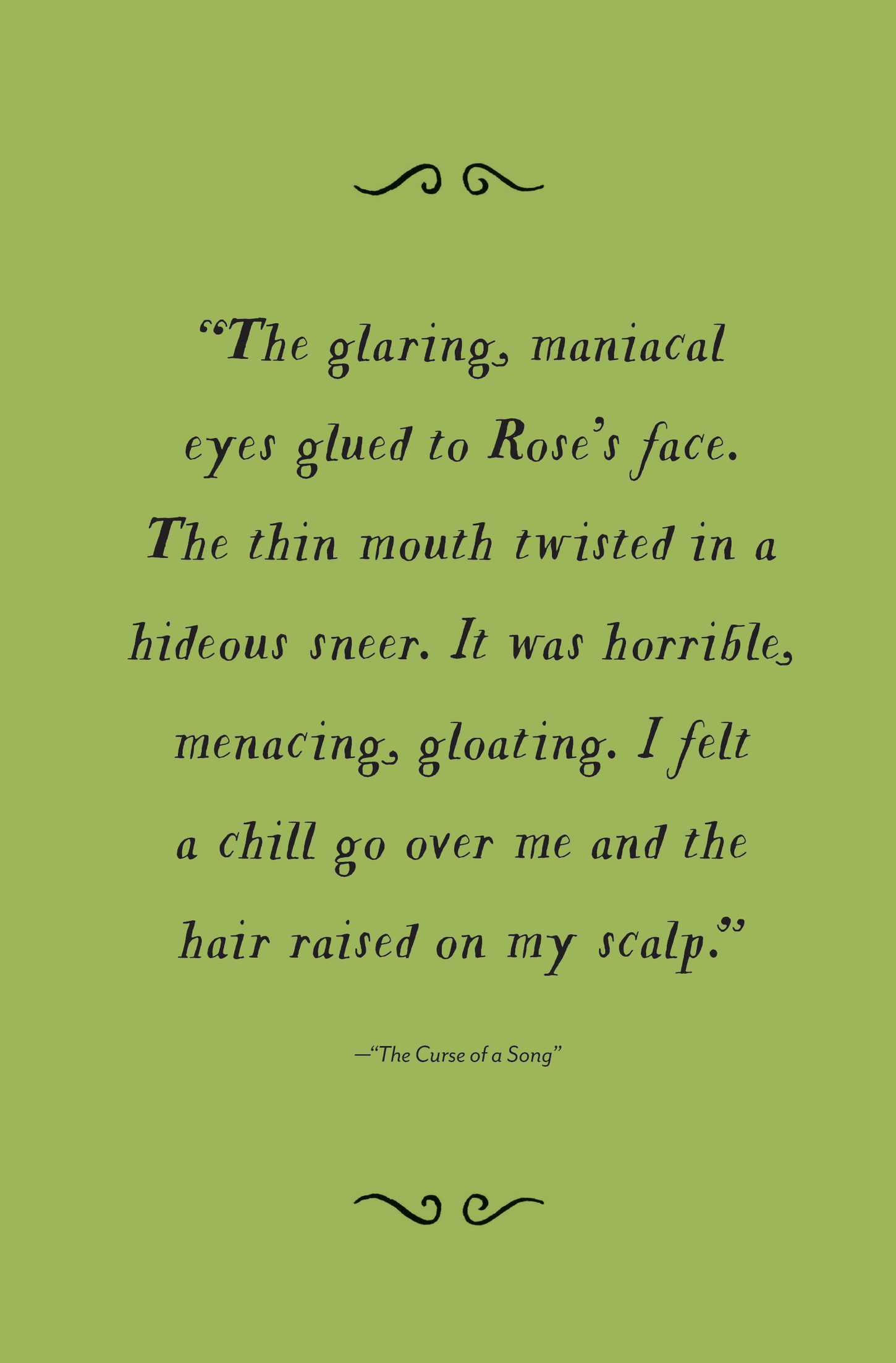 Keeping the Wild West Weird
Keeping the Wild West Weird 
Eli Colter
Eli Colter begins “The Last Horror” with questions: “You wonder what happened to Bleeker? And to Remington? They aren’t the same men any more, are they?” She doesn’t tell us who these men are or what happened to them; instead she lets her ominous words work on our imaginations. And when her rich, evocative prose starts filling in the details, the true horror begins. Consider this next passage in the story:
“Bleeker: who once stood straight-limbed, straight-backed and full-fleshed, walked with high-carried head, clear-glowing eyes and ruddy blond skin; Bleeker, who now walks with a bent shuffle, whose cuticle is so tightly drawn over his emaciated features that it looks like dirty white rubber stretched over a skull; Bleeker, whose eyes have gone blank and sunken in their sockets, whose mouth is tightened in the middle and loose at the corners, whose nose is pinched, whose hands tremble when he isn’t taking care to hold himself in.”
Whatever happened to poor Bleeker is terrible indeed. He’s gone from being the quintessential picture of health, the everyman’s cowboy, a John Wayne prototype to…a walking skeleton. Few writers could describe a character so effectively.
Eli Colter certainly sounds like a fitting name for someone who writes Western fiction. The moniker evokes the image of a cowboy, muscular, with sunburned cheeks and strong features peeking out from beneath a weather-worn Stetson. But Eli Colter is a woman, of course, the pen name of May Eliza Frost, born and raised in Portland, Oregon. As a thirteen-year-old girl, Colter went blind. Though she eventually regained her sight, the temporary disability seems to have fueled her ambition. She set out to educate herself and began a career as a writer; to support herself while she followed her dream, she played piano and organ in movie theaters.
Colter published her first story around age thirty-two, in 1922, in Black Mask magazine, known for mystery and crime fiction. Tracing her career is difficult because not much has been written about her, save for her later standard Western stories. We do know that Colter had a productive writing career that included fifteen stories for Weird Tales magazine and several for Strange Stories. Among her Weird Tales work was a four-part serial that ran from January to April 1926, called “On the Dead Man’s Chest.” Readers voted it one of the most popular stories of the April issue. Other favorites are “The Crawling Corpse” (Strange Stories, December 1939), the aforementioned “The Last Horror,” “The Man in the Green Coat” (Weird Tales, August 1928), and “The Golden Whistle” (Weird Tales, January 1928).
Colter’s non-horror adventure publications include “The Pearl of Hahn” which appeared in Super-Detective (February 1945), “The Hell Cat” in Detective Action Stories (March 1931), “Not in the Evidence” in Hutchison’s Adventure-Story Magazine (September 1925), and “Ozark Justice” in the Liberty Quarterly anthology 19 Tales of Intrigue, Mystery, and Adventure (1950).
To return to Bleeker: “The Last Horror” is a great example of both Colter’s mastery of language and her knack for sinking a hook of suspense into her readers…then pulling it tauter and tauter until the very last page. We won’t disclose the story’s secrets here. But we will say that Colter is a master of writing body horror. “The Last Horror” was ranked the second most popular story of January 1927 by Weird Tales readers and was reprinted in February 1939.
Weird Trails

Colter’s stories were published frequently in Weird Tales, including “weird Westerns,” which are just as they sound: supernatural stories set against a Wild West backdrop. It’s interesting to look at the development of this subgenre. Writers like Robert E. Howard and Charles G. Finney are largely credited with writing the earliest such stories in the 1930s, publishing in magazines like Weird Tales and Argosy. Colter’s weird Westerns predated them, and whether or not she was the very first, she certainly was one of the earliest pulp writers working the trend. The category started to gather steam in the 1970s with the success of the 1977 DC comic Jonah Hex, and its popularity continues today.
Following her foray into weird fiction and weird Westerns, Colter switched to writing straight-up Westerns as well as a few detective stories. “Something to Brag About” (originally published in the Saturday Evening Post) was adapted to film in 1948 as The Untamed Breed, directed by Charles Lamont (the man credited with “discovering” young Shirley Temple). After the 1950s, Colter seemed to largely stop writing; details from this part of her life are especially spotty; we don’t know if she switched pen names or even careers.
Colter met her first husband, John Irving Hawkins, when she advertised for cowboys in order to do research for her writing. He was a ranch hand and aspiring writer with stories to share, and she was a writer in need of inspiration. Later she wrote stories in collaboration with another writer, Don Alviso, the pseudonym for Glenn FaGalde—who became her second husband. They were together until FaGalde’s death in 1957. It would seem from her marriages that Colter’s writing life and personal life were nearly inseparable.
Colter died in Los Angeles in 1984. Despite her successes, she was completely unknown at the time of her passing. Some fans still refer to her on websites and blogs devoted to classic Western novels as “he.”
Reading List
Not to be missed: Eli Colter is one of the once-popular writers of weird fiction who have nearly been lost to obscurity. Her stories are listed in catalogues of pulp writers, but reprints are becoming increasingly difficult to locate. Her work deserves to be republished, reread, reloved.
“The Last Horror” (1927), “The Greatest Gift” (1927), “The Curse of a Song” (1928), and parts of her serials “The Dark Chrysalis” (1927) and “On the Dead Man’s Chest” (1926) are available online in the Weird Tales magazine archive.
Also try: Compared to Colter’s weird work, her not-so-weird Western novels are easier to find as used paperbacks. Check out Blood on the Range (Dodge Publishing, 1939), which was released in 2018 from Wildside Press in both paperback and Kindle editions. The Outcast of Lazy S (Grosset & Dunlap, 1933) and Bad Man’s Trail (Mills & Boon, 1933) are available as reprints from Gunsmoke Westerns (1998) and Sagebrush Westerns (2005), respectively.
Related work: Since Eli Colter’s Weird Tales days, popular culture has seen an explosion in the weird West subgenre. Standout examples include the work of Seanan McGuire and Nancy A. Collins. McGuire contributed to a series of books published by Tor based on the Deadlands role-playing games. Her Deadlands: Boneyard (2017) pits a traveling circus against the Clearing, a secretive community deep within the woods. In several books, Collins spins yarns about werewolves in a Western backdrop; we recommend Walking Wolf: A Weird Western (Mark V. Ziesing, 1995). Seek out the anthology Dead Man’s Hands (Titan Books, 2014), which includes stories by McGuire, Beth Revis, and Elizabeth Bear. Also of note is Six-Gun Snow White by Catherynne M. Valente (reprint Saga Press, 2015), which reimagines the fairy tale princess as a Wild West gunslinger.

